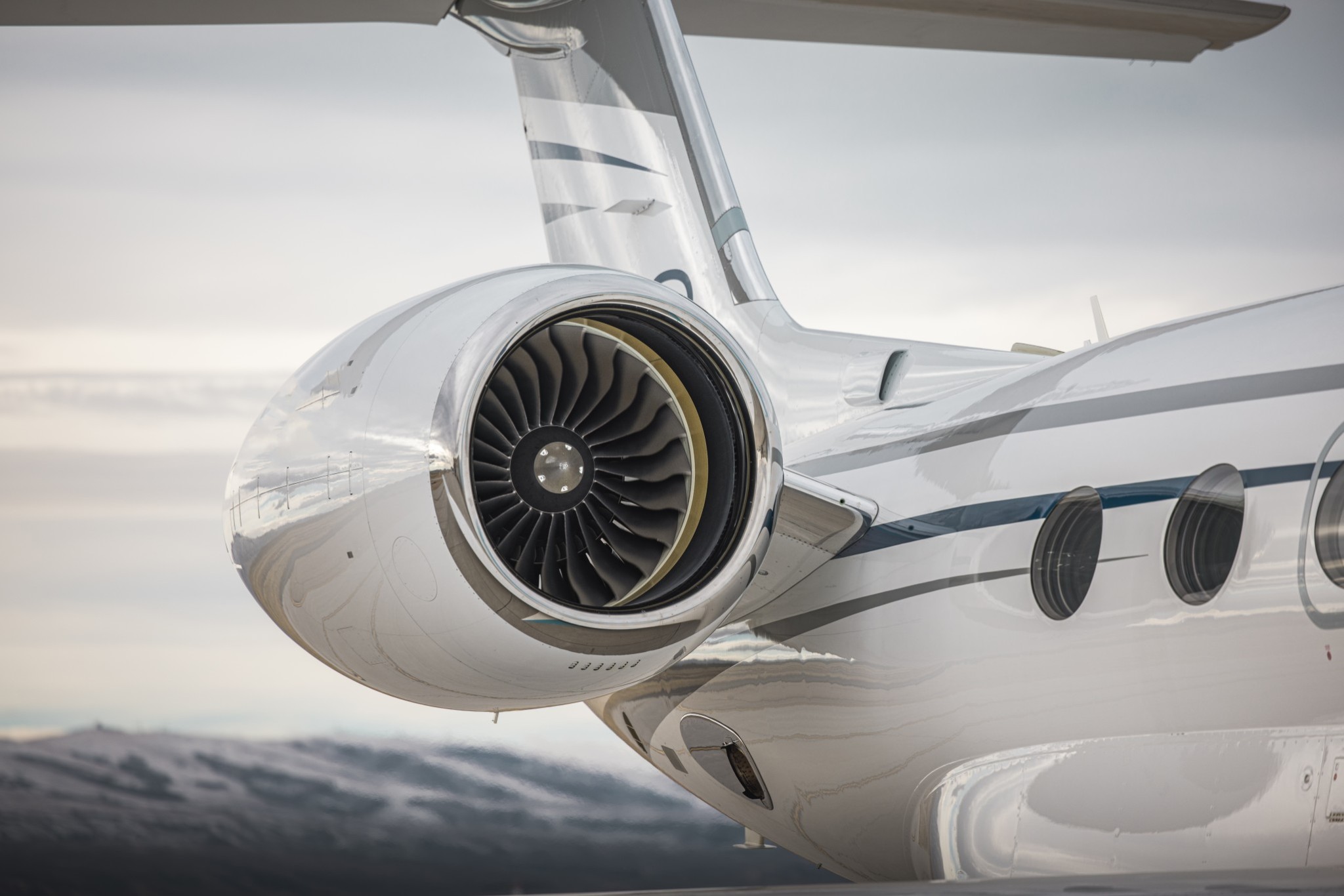Part 5: Exposed – No One Wants to See That… Inspection Costs on the PW545 Engines on the Citation 560XL Series
Date
December 13, 2019This is the sixth segment of jetAVIVA’s Comprehensive Guide to the Citation 560XL Series. You can subscribe to future releases by clicking the button at the bottom of this story.
Did you know engine maintenance accounts for roughly 50% of your aircraft’s total maintenance budget? Did you know that even if you’re on an engine maintenance program you may be exposed to some of these costs? If the thought of being exposed to an unexpected $1MM expense to your aviation department’s budget doesn’t worry you, then this article will likely put you to sleep. But if you’re someone who likes to manage risks, costs, and exposure, then you may want to read on.
Whether you’re operating an Excel, XLS, or XLS+, your airplane is being powered by a set of powerful and reliable Pratt & Whitney PW545 engines. While there are slight variations between each model, these engines produce anywhere from 3,800 – 4,100 lbs. of thrust each and have scheduled maintenance intervals of 2,500 hours for the hot section inspection and 5,000 hours for the overhaul inspection.  There is also a Low Utilization Inspection (“LUI”) required for airplanes flying less than 500 hours per year, which consists of a borescope of the engine to check for corrosion. If corrosion is found, then your engine(s) may be driven in for an early event, and regardless if you are on an engine program, you may be on the hook for some, or all, of these costs. So, what does a hot section, overhaul, and LUI on the PW545 engines cost? I thought you’d never ask.
There is also a Low Utilization Inspection (“LUI”) required for airplanes flying less than 500 hours per year, which consists of a borescope of the engine to check for corrosion. If corrosion is found, then your engine(s) may be driven in for an early event, and regardless if you are on an engine program, you may be on the hook for some, or all, of these costs. So, what does a hot section, overhaul, and LUI on the PW545 engines cost? I thought you’d never ask.
OVERHAULS
In general, you can expect the first overhaul (5,000 hours) of a PW545 engine to cost between $850,000 – $1,100,000 out the door, depending on the flat inspection rate you obtain from the inspection facility performing the overhaul and what is found during the inspection. This includes labor, line replacement units (“LRUs”), lubricants, hardware, other parts, and test cell usage. What this does not include is freight, the labor to remove the engines and reinstall rental engines, rental engine costs, and the labor to remove the rental engines and reinstall your own engines. In general, I tell people to budget about $1MM per side for the engine’s first overhaul, if the engines are not on any engine program at all. If you’re coming up on your engine’s second or third overhaul, then the conversation gets decidedly more difficult.
 For any given business jet engine, there are roughly 12-15 Life-Limited Parts (“LLPs”), sometimes called Life-Limited Components (“LLCs”), that have a cycle limit associated with it. For instance, the impeller on the PW545 engine has a life limit of 13,500 cycles. So, if an airplane operating at a 1:1 ratio (averaging 1 hour of flight time for every 1 cycle), then at 10,000 hours – which would be the engine’s 2nd overhaul (referred to as “second run overhaul”) – you would be required to replace the impeller because it would not make it to the 3rd overhaul. Alternatively, if the airplane was averaging a 1.2:1 ratio, the impeller wouldn’t need to be replaced until the 3rd overhaul. This assessment is done for all LLPs each time the engine goes in for overhaul.
For any given business jet engine, there are roughly 12-15 Life-Limited Parts (“LLPs”), sometimes called Life-Limited Components (“LLCs”), that have a cycle limit associated with it. For instance, the impeller on the PW545 engine has a life limit of 13,500 cycles. So, if an airplane operating at a 1:1 ratio (averaging 1 hour of flight time for every 1 cycle), then at 10,000 hours – which would be the engine’s 2nd overhaul (referred to as “second run overhaul”) – you would be required to replace the impeller because it would not make it to the 3rd overhaul. Alternatively, if the airplane was averaging a 1.2:1 ratio, the impeller wouldn’t need to be replaced until the 3rd overhaul. This assessment is done for all LLPs each time the engine goes in for overhaul.
Hot Sections Inspections (HSI)
HSIs on the PW545 are due at half the interval time of the overhaul, which is at 2,500 hours of time since new (“TSN”) or at 2,500 hours of time since overhaul (“TSO”). The cost of which is between $250,000 – $450,000, per engine out the door, again depending on the flat rate you obtain from the facility performing the inspection and what is found during the inspection.
Low Utilization Inspections (LUIs)
And finally, there’s the engine’s LUI requirement. This inspection is required if the engines are flying less than 500 hours per year and requires the operator to have a borescope inspection of the HP compressor, diffuser ducts, combustor, and fuel nozzles performed on the engine every 24 months after 10 years of service since new or overhaul. Basically, this is a corrosion inspection of the engine, and if corrosion is found then the engine must be opened up and inspected further. In a best-case scenario, they’ll simply replace one or two items, close the engine up and return it to service. In a worst-case scenario however, further inspection of the engine could result of a complete tear-down of the engine and replacement of several parts before it is returned to service. And, depending on your engine program coverage, this worst-case scenario could mean an unexpected $800K-1MM expense to your budget.
 What do the Engine Programs Cover Then?
What do the Engine Programs Cover Then?
So, what are you on the hook for if you actually have an engine program? The answer is, it depends on your level of coverage. Check your policy and talk with your program provider, because in most cases, you’ll be responsible for something. Things you want to ask are: “are LLPs covered”? “Are rental engines covered”? “Is an LUI inspection covered, and if so, what is covered if something is found”? “What about consumables, freight ,and R&R”? And in the case of Textron’s PowerAdvantage program (not to be confused with PowerAdvantage+), ask them what the average cost is to you for the overhaul since this program only covers parts (other than LLPs) and none of the labor. Given that most of the cost associated with a hot section and overhaul or mainly labor, this ends up being a much higher financial burden to the owner than other programs. In short, get to know your coverage in order to manage risk. You have the option of increasing (or decreasing) coverage now depending upon your needs and threshold for unexpected costs. Better yet, know your coverage before you buy the airplane.
For more information on engine maintenance, who I would recommend for overhauls/HSIs, or other ways I can help you find your next perfect jet, please contact me anytime at [email protected] or (512) 410-0295.
You can sign up for future installments of our 560XL Guide and have them delivered straight to your inbox by clicking below.



